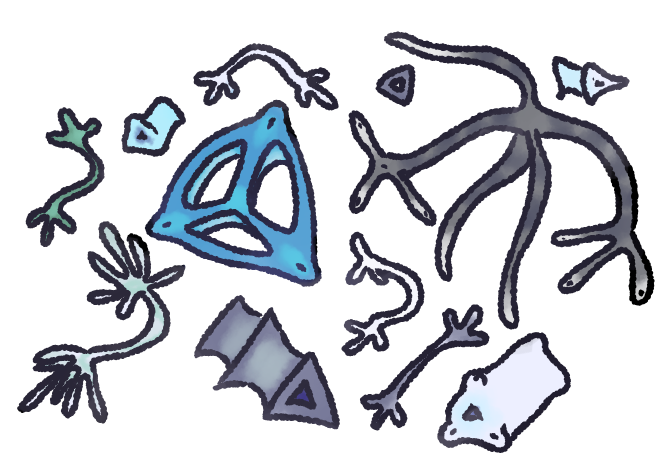Plankton
still a WIP... a big one...
This page is dedicated information about planktonic aozoa, in terms of anatomy and behavior.
Various species
Overview
While the phylum aozoa can reach great sizes and mobility, the majority of fauna in the clade are small drifting organisms at whim to the elements.

Range
Planktonic aozoa are found all over the world within the seas and the air. Their landlocked relatives may be found in the soil or ice or even as parasites inside other organisms. One can see vast clouds of aozoa floating on the wind or in the ocean.
Diet
This is a blanket clade because so many animals fall under the category of planktonic. They are most often heterotrophs which eat autotrophs to become autotrophic themselves, absorbing photosynthetic pigment and using it for themselves. The larger of the drifters will eat other plankton.
[insert image - diet]
Anatomy
Aozoa, like most other Confibulan fauna, use hemocyanin in their blood but these don't often have skeletons at all. They have a poor oxygen affinity, but their world has a low oxygen content anyways so it ended up being the most efficient oxygen transport pigment. Their innards, thus, are blue. They are trilaterally symmetrical as well as mirrored from front to back. They can eat through either end and use their dextrous eyestalks as limbs to grasp onto food. Many are small enough to not need closed circulatory systems.
[insert image - anatomy]
Reproduction
Most plankton reproduce asexually by budding or fission. Some may do so sexually by releasing gametes into the water or spores into the air.
[insert image - reproduction but like... not in a nasty way]
Behavior
These are very simple organisms who are most often depicted as food sources for tents. They spend their entire lives drifting through currents either airborne or at whim of the sea.
[insert image - behavior]